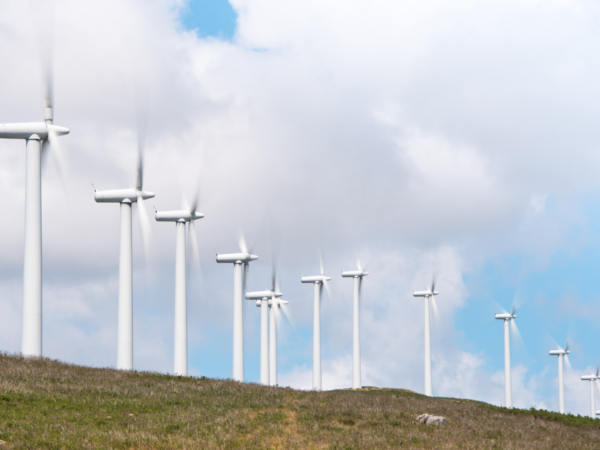 Following the release of the Energy Security Strategy and our April event on onshore wind, Poppy Maltby, head of cities and regions at Regen, reflects on what it is going to take to get onshore wind off the ground again and the role of local authorities in helping to get projects built.
Following the release of the Energy Security Strategy and our April event on onshore wind, Poppy Maltby, head of cities and regions at Regen, reflects on what it is going to take to get onshore wind off the ground again and the role of local authorities in helping to get projects built.

Energy security “strategy”
The onshore wind sector in England has been on a policy rollercoaster over the last few weeks with hopes of a revival raised and then largely dashed in the government’s Energy Security “Strategy”.
Still, there was a chink of light in the document. That there was a mention of the technology at all is a positive. Onshore wind has often been conspicuously absent in policy.
The headline is that there will now be support for “a number of new projects with strong local backing”.
The document also contained a promise to consult this year on “developing local partnerships for a limited number of supportive communities who wish to host new onshore wind infrastructure in return for benefits, including lower energy bills.”
On 27th April, we were excited to be able to welcome over 250 different clean energy stakeholders and many local and regional bodies, to an onshore wind event about England. After too many years it was good to talk about the technology again in England with something new to say.
To recap
Onshore wind, as many people know, is the cheapest renewable generation technology and also, in theory, one of the quickest to construct.
If you want to quickly and cheaply lower carbon emissions and energy costs in the UK, there is no rival.
This global wind atlas illustrates nicely the huge untapped abundant wind resource the UK has at its disposal, and in England, not just in Scotland and Wales.
Increasingly local communities and local authorities want to know how they can get wind built in their areas. The answer at the moment is, of course, they probably can’t… because onshore wind is effectively ‘banned’ in England.
As planning guidance is currently written (footnote 54 for those in the know), they have to be in areas identified in local or neighbourhood plans and one local objection can derail a project. And the result is of course, no projects. As Regen’s infographic shows.
If we want the UK to achieve net zero, sooner rather than later, and effectively deal with what is likely to be a medium to long term cost and energy security crisis, this is a terrible wasted opportunity.
Community benefit models
So back to that Energy Security Strategy. Despite the omission of strong support, targets and amended planning, the emphasis on community benefit from projects is something Regen has supported for many years. It sits at the heart of Regen’s mission to decarbonise, decentralise and democratise energy.
There are a number of models that can achieve this community benefit including local benefit funds and local ownership, which ourselves and others have explored over the years.
In addition, we are now seeing lots of lessons to learn from in the supportive policy environments of Wales and Scotland – with their aspirational targets on community and local ownership – on how this can be made to work.
At our event we heard from the team developing Bristol’s community owned Lawrence Western Turbine about the key steps, challenges and solutions to get an onshore turbine off the ground. But for those wanting to replicate their model, the availability of early stage and development funding was felt to be a key missing element.
Right project, right place.
We also discussed that there is clearly an important role here for local authorities. The current system allows for onshore areas to be identified in local plans, of which only a few local authorities have so far dared to do. For those that do, a further issue can be that these areas are often not the ones that developers can make work due to other limiting factors like insufficient wind speeds and perennial problems of affordable network connection and grid availability.
At our event, we discussed that instead of, or in addition to, ‘lines on a map’ to show what areas support onshore wind, what may be needed instead is more of a principles based policy from a local authority – which supports the technology and allows for the process between developers, local authorities and communities to work together to develop feasible and locally beneficial project options.
Alongside this, we covered the role of education to bring communities, local councillors, politicians and MPs up to speed on the technology, the benefits and how it can best work for them.
Demonstrating majority support
Onshore wind projects in England have regularly faced opposition from what is often a small but extremely vocal minority.
Positively the strategy mentions a consideration of “how clear support can be demonstrated by local communities, local authorities and MPs.”
Need for scale
A final point made by one of our speakers was that the key benefits to communities from onshore wind and other renewables is not just direct financial benefit to households or individuals – but wider economic opportunity and investment to allow areas to participate in the net zero transition.
However, without sufficient scale to the technology, individual pilot projects dotted across England are not going to create many skills hubs, apprenticeships, new businesses and local investment. For that, you need to think bigger and have strategic and national support. Which for now remains elusive.
Regen will be working to engage with BEIS, hoping to develop the emerging thinking on these topics with the ultimate objective of widening the chink of light, perhaps into an open door.
But enough of the mixed metaphors.
Please do get in touch if you want to help us refine our thoughts on what this small policy shift might mean and how it might work in England.
You can see the slides and listen to the event online here.

